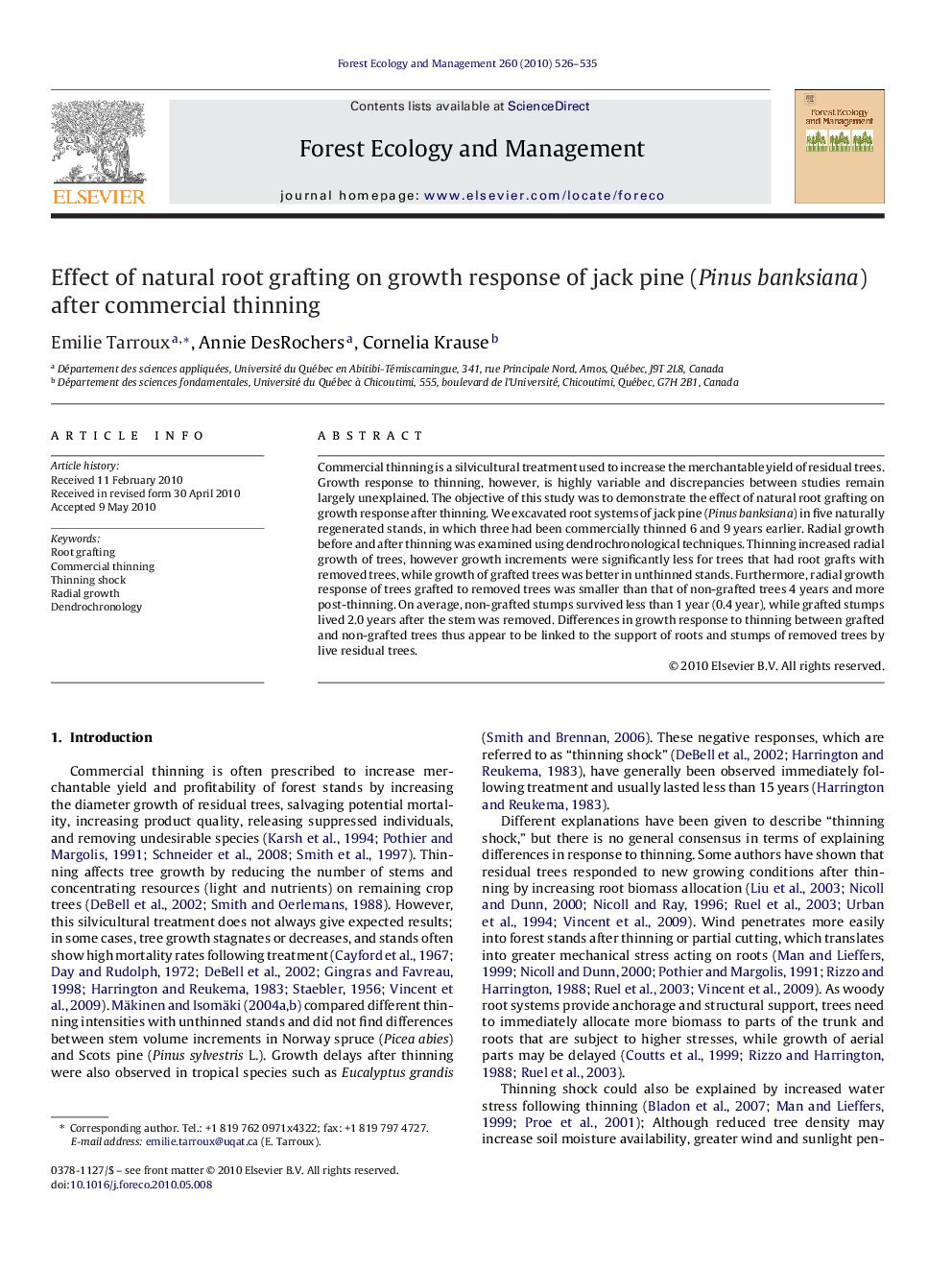| Article ID | Journal | Published Year | Pages | File Type |
|---|---|---|---|---|
| 87935 | Forest Ecology and Management | 2010 | 10 Pages |
Commercial thinning is a silvicultural treatment used to increase the merchantable yield of residual trees. Growth response to thinning, however, is highly variable and discrepancies between studies remain largely unexplained. The objective of this study was to demonstrate the effect of natural root grafting on growth response after thinning. We excavated root systems of jack pine (Pinus banksiana) in five naturally regenerated stands, in which three had been commercially thinned 6 and 9 years earlier. Radial growth before and after thinning was examined using dendrochronological techniques. Thinning increased radial growth of trees, however growth increments were significantly less for trees that had root grafts with removed trees, while growth of grafted trees was better in unthinned stands. Furthermore, radial growth response of trees grafted to removed trees was smaller than that of non-grafted trees 4 years and more post-thinning. On average, non-grafted stumps survived less than 1 year (0.4 year), while grafted stumps lived 2.0 years after the stem was removed. Differences in growth response to thinning between grafted and non-grafted trees thus appear to be linked to the support of roots and stumps of removed trees by live residual trees.
